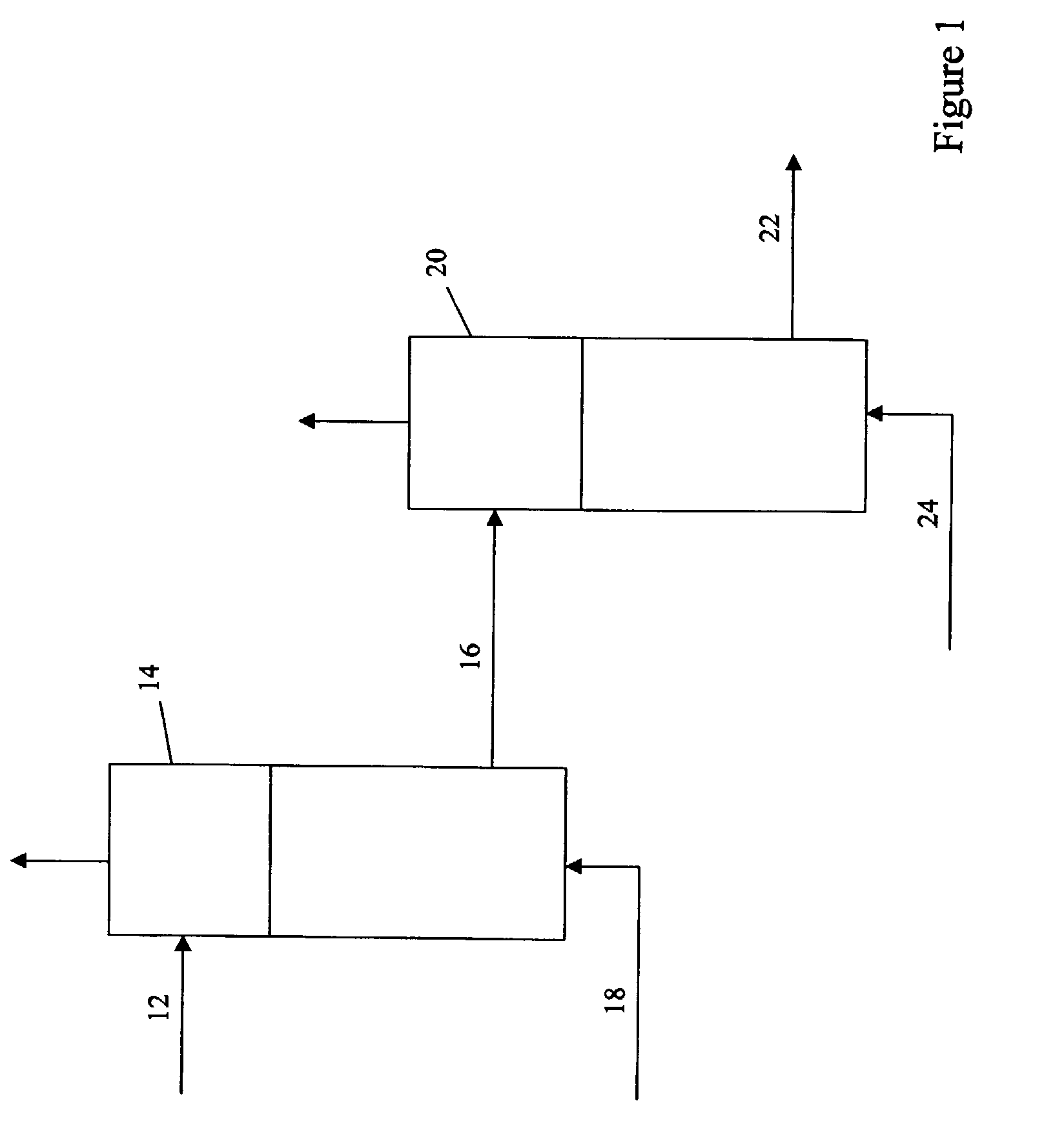Hydrocarbon conversion processes using non-zeolitic molecular sieve catalysts
a technology of molecular sieve and catalyst, which is applied in the direction of hydrocarbon preparation catalyst, catalyst activation/preparation, hydrocarbon from oxygen organic compounds, etc., can solve the problems of increasing the life of the catalyst, physical breakdown of the original catalyst into smaller catalyst particles known as fines, and the breakdown of the original catalyst into smaller catalyst particles
- Summary
- Abstract
- Description
- Claims
- Application Information
AI Technical Summary
Benefits of technology
Problems solved by technology
Method used
Image
Examples
example 1
[0104]SAPO-34 molecular sieve, 50% by weight, aluminum chlorhydrol, 10% by weight, and UF grade kaolin clay, 40% by weight, was mixed with sufficient water to produce a slurry with approximately 40% by weight solids. The slurry was fed into a spray drier to form spray dried catalyst. The spray dried catalyst was analyzed by XRF (X-ray Fluorescence) spectroscopy. The amount of chlorine in the spray dried catalyst was 33,800 ppmw. The GAL Index of the un-calcined catalyst was greater than 50.
examples 2 – 4
EXAMPLES 2–4
[0105]Spray dried catalyst of Example 1 was heated in a nitrogen stream at temperatures of 600° C., 650° C. and 700° C. for one hour. The heat treated catalyst was then analyzed by XRF to determine the amount of residual chlorine remaining in the catalyst. Table 1 lists the residual chlorine content of each catalyst.
examples 5 – 7
EXAMPLES 5–7
[0106]Spray dried catalyst of Example 1 was heated in a nitrogen stream at temperatures of 600° C., 650° C. and 700° C. for nine hours. The heat treated catalysts were then analyzed by XRF to determine the amount of residual chlorine remaining in each catalyst. Table 1 lists the residual chlorine content of each catalyst.
PUM
| Property | Measurement | Unit |
|---|---|---|
| Temperature | aaaaa | aaaaa |
| Temperature | aaaaa | aaaaa |
| Fraction | aaaaa | aaaaa |
Abstract
Description
Claims
Application Information
 Login to View More
Login to View More - R&D
- Intellectual Property
- Life Sciences
- Materials
- Tech Scout
- Unparalleled Data Quality
- Higher Quality Content
- 60% Fewer Hallucinations
Browse by: Latest US Patents, China's latest patents, Technical Efficacy Thesaurus, Application Domain, Technology Topic, Popular Technical Reports.
© 2025 PatSnap. All rights reserved.Legal|Privacy policy|Modern Slavery Act Transparency Statement|Sitemap|About US| Contact US: help@patsnap.com

